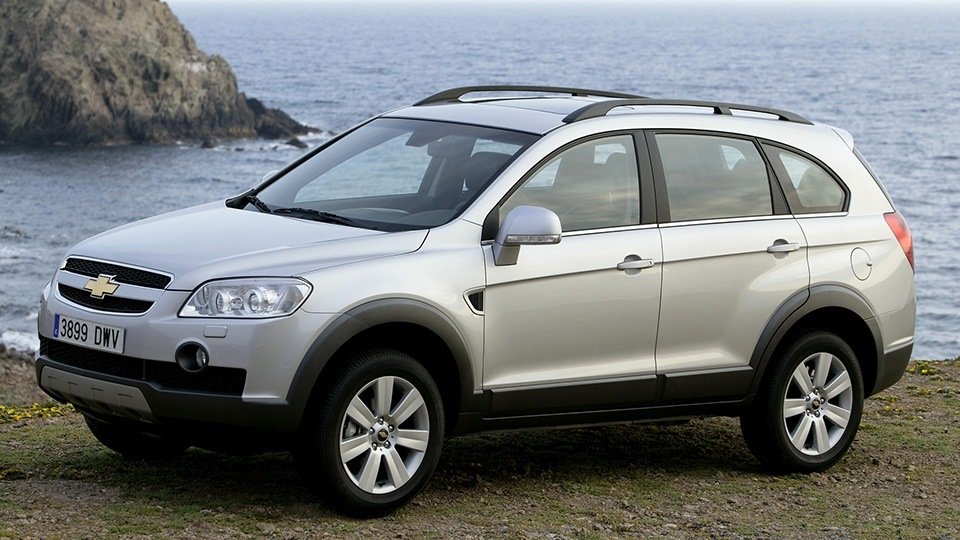
Chevrolet Captiva - very underrated
Every self-respecting concern has an SUV or crossover for sale - especially when the brand is from the USA. But how relevant is the Chevrolet Captiva to the American automotive industry and is it worth buying a used one?
Chevrolet eventually turned tail and pulled out of the European market. The connection with Daewoo probably prevented him from conquering the old continent, and even the posters on which the Corvette or Camaro stood next to the Lacetti, or ... Chevrolet Nubir, because they were, did not help here. It's like going to the same gym as Hulk Hogan and bragging about it just because you won't have any more muscles. Nevertheless, among European Chevrolets you can find interesting proposals - for example, the Captiva model. The manufacturer emphasized that this car was created with a dedication to the Old World. And the Poles? A thread. They preferred to visit the Volkswagen and Toyota showrooms. A small SUV with a golden butterfly on the hood did not conquer our country, but it still sold much better than its twin brother from General Motors - Opel Antara. The greater success, if you can call it that, was due largely to a lower price tag and a slightly more practical interior.
The oldest Captivas are from 2006, and the newest are from 2010 - at least when it comes to the first generation. Later, a second entered the market, although it was more of an evolution than a revolution, and the changes were mainly in the external design. “Edynka” does not look very American, in fact, nothing extraordinary stands out. Oh, an off-road vehicle with a calm design - not even a dual boost system will disguise a gentle disposition. In the secondary market, you can find models with a drive on one or both axles. But are they worth buying?
Usterki
In terms of failure rate, Captiva is no better and no worse than Opel Antara - after all, this is the same design. Compared to other brands, this result is quite average. Basically, the steering mechanism fails, and the brake and exhaust systems also suffer from minor ailments. Gasoline engines are old school, so there's not much that can break in them, and it's mostly the hardware that fails. Diesels are another matter - the injection system, particulate filter and dual-mass wheel may require maintenance there. Users also complain about clutch problems and a problematic automatic transmission that can twitch. As in modern cars - electronics also presents unpleasant surprises. We are talking about what is under the hood, sensors and controllers, as well as about interior equipment. That said, the Captiva isn't much of a problem car. You can also find many surprises in the interior.
interior
Here, weaknesses collide with strengths so that they sparkle. However, poor finishes come to the fore. Plastics are as hard as walnut shells, and they can also creak. However, a surprise awaits in the trunk, because Captiva, unlike Antara, offers a third row of seats. True, the convenience of traveling on it can be compared with a flight from Warsaw to New York in a suitcase, but at least it is so - and the children will like it. The second row of seats offers a little less space than the Opel Antara, but it's not bad anyway - there's still plenty of room. The flat floor at the back also pleases, so that the central passenger does not have to think about what to do with his feet. Up front, there’s nothing to complain about – the seats are spacious and comfortable, and plenty of compartments help keep clutter under control. Even the one in the armrest is large, which is not a rule at all.
But is the journey enjoyable?
On my way
It is better to think twice about buying a copy with a machine gun. The box is incredibly slow, and pressing the gas pedal to the floor causes a panic attack. A manual transmission works better, although there are designs on the market that work more accurately. And in general, perhaps, not a single Captiva variant likes a dynamic ride, so it makes no sense to look for emotions in an off-road Chevrolet right from a falling plane. All power units are slow and rather fuel-intensive. The base diesel 2.0D 127-150KM is dynamic only at city speeds. On the track or mountain serpentines, he gets tired. The average fuel consumption of about 9l / 100km is also not a peak achievement. 2.4-liter petrol version with 136 hp. requires speed, because only then does it gain some vivacity. And that there is nothing for free - the tank dries out pretty quickly, because in the city even 16l-18l / 100km is not a problem. On top is the 3.2L V6 petrol - this version is also a bit on the heavy side, but at least the exhaust sound is enticing. The suspension could be a little quieter, and the body leans in corners, which discourages road frenzy, but on our roads, the soft suspension works well. The most pleasant thing is to travel calmly - then you can appreciate the comfort and convenience. By the way, getting a well-equipped used copy is relatively easy.
The Chevrolet Captiva has many strengths, but its success in our market has been limited by, among other things, a poor engine offering. However, resigned to the weaknesses, it quickly becomes clear that for a reasonable amount you can become the owner of a very practical used car. Admittedly, it has as much in common with America as spring rolls with a hamburger, but at least Captiva was created with a dedication to Europeans, you see - although few people appreciated it.